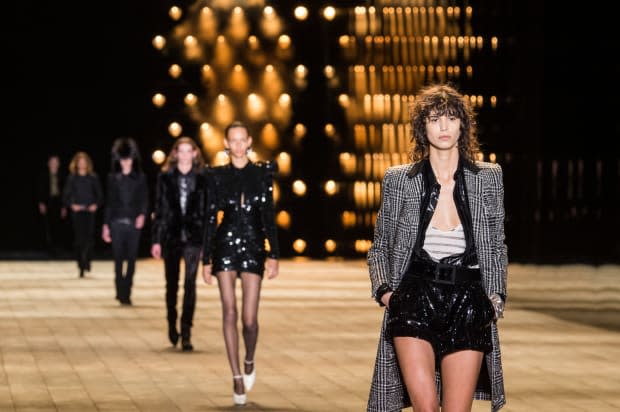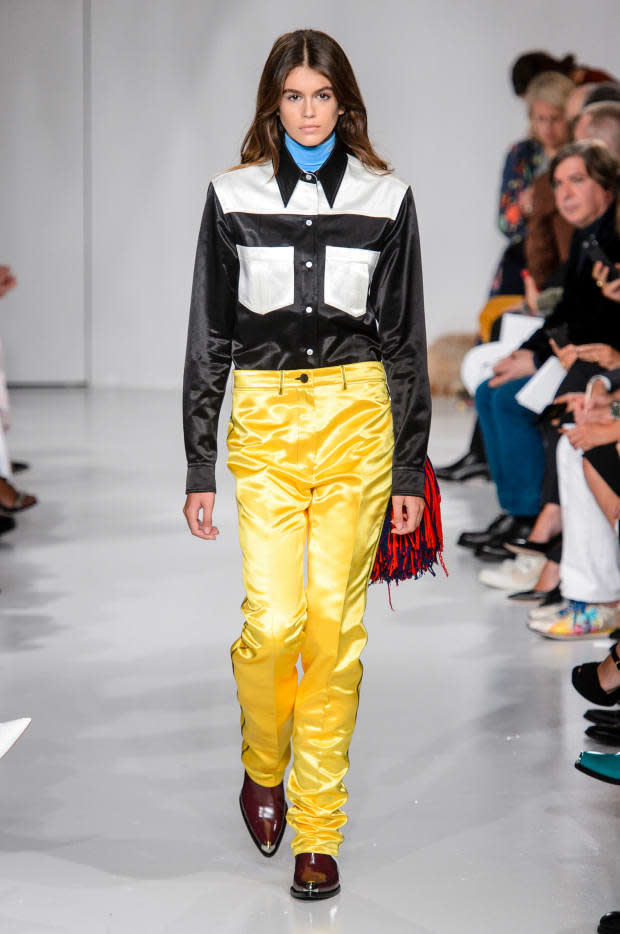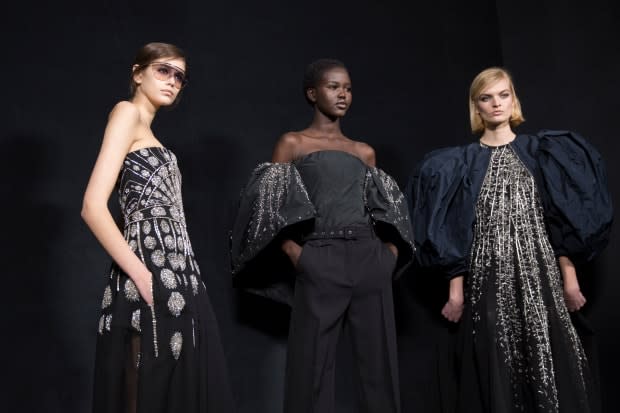New Under-18 Model Bans Are Changing How Agencies Recruit and Sign Talent
"In the end, what matters most is that the model start her career off when she is physically and mentally best suited for success."

In March, luxury conglomerate Kering announced that, starting with the Fall 2020 season, its brands, which include Gucci, Saint Laurent and Balenciaga, would no longer employ models under the age of 18.
"As a global luxury group, we are conscious of the influence exerted on younger generations, in particular by the images produced by our houses," Kering's chairman and CEO François-Henri Pinault said in a statement. "We believe that we have a responsibility to put forward the best possible practices in the luxury sector and we hope to create a movement that will encourage others to follow suit."
The move saw Kering join Condé Nast and the CFDA, who initiated similar policies, though the latter's was less concrete; in an August 2018 letter to designers, the organization said it was "encourag[ing]" designers "to consider only working with models aged 18 and over," though it didn't prohibit them. Still, the announcement, like Condé Nast's and Kering's, was met almost exclusively with applause — together they signified an evolving effort by the industry to protect the young women it preys upon.
But fashion has a long history of employing underage models: Kate Moss and Naomi Campbell were discovered at 14 and 15, respectively; Kendall Jenner, Gigi and Bella Hadid and Kaia Gerber all made their modeling debuts well before they were 18. Could an industry that's spent decades capitalizing on underage models in terms of both exposure and revenue — a Grazia Australia article suggests Gerber will be more successful than mom Cindy Crawford, thanks in part to her starting her career at such a young age — be ripe for change?
As some of the world's largest and most influential players refuse to hire models under the age of 18, top modeling agencies are being forced to reevaluate how they operate. Building a model's brand and portfolio doesn't just require landing major jobs — it starts with scouting and requires a customized and comprehensive development process, two practices that agencies may be forced to reconsider.

"When the CFDA, Kering and Condé Nast get behind an initiative, it trickles down to those who scout the models, which means the models now being offered to us are, with rare exceptions, already 18 or older," says Kevin Fitzpatrick, executive director of Silent Models. "The mother agents — the ones who originally find models at, for instance, the local shopping mall — know to encourage the girls to stay in school longer. Conversations with parents are now more about 'hey, let's have your son or daughter finish up high school, get their diploma and then we can send them abroad.'"
While the traditional development process typically involves "learning how to take pictures, learning how to work with photographers and learning how to show up on time," according to Wilhelmina's CEO Bill Wackermann, he notes that, now more than ever, it also includes having an open dialogue and a strong relationship with the model's parents.
"Under the age of 18, you're still developing as an individual and a young adult," Waackermann tells Fashionista. "We work very closely with mother agents, but also the parents themselves. This is a business. It's great for the Kaia Gerbers of the world who have unlimited funding for that type of lifestyle, but most models don't. Do you want your 16-year-old living in an apartment in New York City or Paris with other young people? Those are the decisions we really have to think through with the parents, and that's why we really advocate for staying home and coming to us when you're 18, when you're ready to make this a career."
Though Wilhelmina will sign girls ages 15 or 16, Wackermann says the company sits down with parents to discuss whether the timing is really right for their child. "Modeling is a job," he says, "and unless they are so adamant about working immediately, we tell them to stay in school, to come here in the summer and we'll take test photos and work on development then. We've always believed that when someone turns 18 they are in a much better place to understand the responsibilities of the job and the level of professionalism that's expected from them."
Related Articles
Lvmh and Kering Jointly Ban Underweight and Underage Models
Meet the 16-Year-Old Saint Laurent Model Who Was Scouted at Coachella
How Storm Management's Sarah Doukas Went From Modeling Herself to Discovering Kate Moss and Cara Delevingne
While these discussions aren't necessarily new, they have certainly become more prevalent (Wackermann says it's because "New York has really limited the models walking to over 18"). And though most agencies admit the development process hasn't been greatly impacted by these policies, it has, in many instances, been prolonged. (It's not surprising, considering Chris Gay, co-CEO of Elite World, which owns Elite, The Society, Women, Supreme and Women 360, told Business of Fashion last month: "The longer we can delay [a model's entry into the full runway circuit], we found it creates a healthier environment and long-term career.")
Fitzpatrick says that "while the basics [of the development process] remain the same — start the model off with a few clean, simple test shoots, teach her how to walk the runway, book her an 'exclusive' for Fashion Week, follow that up with some cool editorials and top it off by booking her for the seasonal campaign of a major brand" — other parts are becoming more robust. It's not just to protect the models, which is, of course, of utmost concern, but to ensure that they are mentally prepared to begin working in the first place, which is one of the primary focuses of Kering's policy. As Marie-Claire Daveu, the company's chief sustainability officer and head of international institutional affairs, said in a statement: "In our view, the physiological and psychological maturity of models aged over 18 seems more appropriate to the rhythm and demands that are involved in this profession."
And Fitzpatrick agrees. "In reality, most young Americans start their first job in their late teens or early twenties, certainly after completing high school," he says. "By that standard, models starting their careers at age 18 or soon after puts them more or less in line with their peers in other industries. We think models should, at a minimum, complete high school before starting their modeling career."
While IMG, which represents both Hadids, still signs models under the age of 18, they have also put a heavy focus on "training and selective exposure to set the stage for a long-lasting career," says David Cunningham, the company's senior vice president. "Younger models are integrated into our development board, which offers training programs like IMG Model Prep [which includes education on physical and mental health, casting, photography, business, and more], as well as opportunities to gain practical experience in age-appropriate settings." Cunningham notes that a strong development program helps "prepare talent for full-time careers in modeling" and allows them to "enter the industry with the confidence and professional know-how that ensures their long-term success."
Elite World, too, is still working with under-18 models; Gay tells Fashionista that "historically, models have always been scouted at different ages, and both scouting and development have always been highly individualized processes. Still, he notes that "the new 18+ guidelines, which our company advocates for, have been encouraging, because it removes the pressure of models having to choose between their education and career." He adds: "It allows them to experience this business and develop their craft, without the pressure of embarking on a full global show circuit."

That pressure of the global show circuit, however, still exists. While New York has the Child Model Act, which requires companies to follow specific guidelines in order to employ models under 18, in Europe, "there's more fluidity; girls are still walking [runways] at 16," Wackermann says. Plus, luxury conglomerate LVMH, which owns Louis Vuitton, Celine and Givenchy, among others, told Fortune last month that they "firmly disagree" with Kering's policy — a move that continues to promote a certain fantasy to young girls while ignoring the realities of both traveling and working abroad.
"For many models, having to travel to foreign countries, being away from the comforts of home and lacking the daily guidance and support of their family, can be very emotionally taxing," says Fitzpatrick. "The temptations of city life in New York, Paris and London can overwhelm just about anyone — particularly someone under the age of 18. That's another reason why we support these rules."
As a result, agencies like Ford, DNA and The Society have committed to no longer submitting models under 18 to brands for runway shows. Fitzpatrick, however, says Silent is taking a stand by not signing any models underage, period.
"Our rule is to only sign models that have reached the age of 18," he says, noting if a model is slightly younger they are "happy to meet and track her progress and work alongside her parents until they are of age." Only then will the agency officially sign her.
"It takes real leadership for these things to take place," he says. "In the end, what matters most is that the model start her career off when she is physically and mentally best suited for success, and we think that's at age 18 or over."
Sign up for our daily newsletter and get the latest industry news in your inbox every day.
